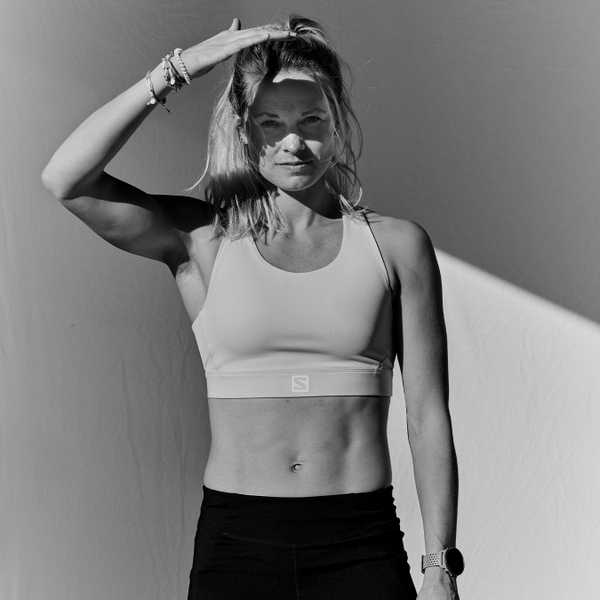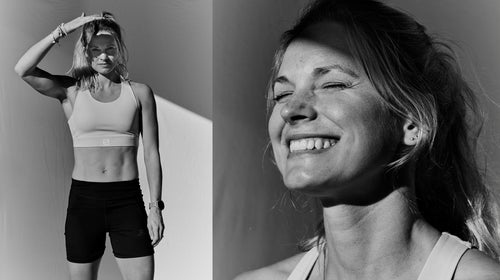Jessie Diggins Is Out to Make Olympic History (Again)
Four years ago, the Minnesota phenom won historic Olympic gold in cross-country skiing, alongside Kikkan Randall. She was just getting going.
New perk: Easily find new routes and hidden gems, upcoming running events, and more near you. Your weekly Local Running Newsletter has everything you need to lace up! .
For starters, there’s the foot-long, platinum-blond braid that trails in the air behind Jessie Diggins, smacking against her broad, chiseled lats as she rockets down the road. It’s as if she’s producing more energy than her skis can use, and the excess is coming out the top of her head.
Then there’s the noise. As Diggins begins her descent toward where I’m standing at the side of the road, a grunt is barely audible above the rhythmic clacking of carbide pole tips against pavement. It’s 80 degrees and sunny on a late-June Monday in Peru, Vermont. Which means that Diggins and ten of her teammates from the T2 club team are on roller skis—roughly three-foot-long cross-country boards with wheels at either end. At best a mere approximation of true cross-country skiing, this is the only way they can train for the technical demands of their sport year-round. They stride back and forth across the hot pavement, past barns and clapboard houses, dressed in bike helmets, running shorts, and nordic ski boots.
The noise grows louder as Diggins zooms toward the bottom of the hill. She’s bent over in a loose tuck with her hands on her knees, slack-jawed with exhaustion, exhaling—yelling, really—in hoarse bursts. ������!… ������!… ������!…
It’s an alien sound, yet unsurprising if you’ve ever seen the 30-year-old launch herself across a finish line—for example, when she and Kikkan Randall won the United States’ first gold in cross-country skiing, in the team sprint at the 2018 Pyeongchang Winter Olympics. As Diggins rolls along patched asphalt, panting heavily, I can’t help but imagine that this is how the gold-medal moment sounded: like someone who has given exactly 100 percent.
After a brief recovery, the group starts another set of intervals. Diggins’s coach, Jason Cork, pedals behind them on a bike. By the end of the first interval, Diggins has pulled ahead of her teammates. She and Cork roll to the side of the road. From the back pocket of his bike jersey, Cork grabs a blood-lactate device, which he’ll use to track how efficiently Diggins’s body is performing. The gadget isn’t working. He has to change the batteries.
“It’s because somebody’s watching,” Diggins says, turning toward me and flashing a wide, conspiratorial grin.
Not that Diggins isn’t used to spectators at this point. She has 35 World Cup podiums and four World Championship medals to her name. Even before she and Randall won Olympic gold, Diggins was among the country’s most famous cross-country skiers, one of a small group of women who’d helped the national team podium far more frequently than at any other time in its history. Victory in Pyeongchang signified the end of a decades-long underdog chapter in U.S. nordic skiing.
Randall retired at the end of that season, but Diggins was just getting started. Since then she has stood on more than 20 World Cup podiums. (There are around 30 women’s World Cup races each season.) Eight of those were in 2021, her best season to date. That included the overall win at the Tour de Ski—a stage race, consisting of eight World Cup events in ten days, that many believe is the sport’s biggest challenge. No other North American had ever won it. The victory rocketed her to the top of the World Cup standings, and she finished the season clutching both the overall title and the distance title—two more firsts for American women. Diggins is now one of the winningest cross-country skiers the U.S. has ever produced. And last winter, she was the best female racer in the sport. The only question is: Can she turn that momentum into more Olympic hardware at the 2022 Beijing Games’ six nordic events?





